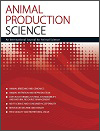Animal Production Science
Volume 64
Number 16 2024
Calf-rearing practises can influence calf development and milk sales for the producer, and consumer demands for high animal-welfare practises may require changes to future rearing practises. The aim of this research was to compare calf growth and milk requirements by using conventional artificial rearing with calves reared with their dam in a pastoral dairy system.
This article belongs to the Collection Australasian Dairy Science Symposium 2024.
The dairy industry contributes significantly to the Australian rural economy, but to maintain its social licence and supply-chain access, greenhouse-gas emissions must be reduced. We found that substantial emissions abatement may be possible, but cost and knowledge gaps currently limit on-farm adoption of abatement options. Although some reduction strategies look hopeful, more research is needed if the industry is to reduce its footprint but remain profitable.
Food production is increasingly a topic of interest to consumers. The aim of this study was to evaluate the use of injectable progesterone as a possible replacement for intravaginal implants in ewes. We believe that long-acting progesterone can be an alternative to short protocols for inducing synchronized estrus.
Black soldier fly larvae are a promising alternative ingredient of poultry feed. They might be able to replace soybean and fishmeal because they contain high protein and fat, and are also rich in vitamins and minerals, and because partial replacement of soybean and total replacement of fishmeal produce no adverse effect on the growth performance of village chickens. Therefore, they are a suitable replacement of these traditional ingredients in poultry feed.
This article belongs to the Collection Sustainable Animal Agriculture for Developing Countries 2023
A literature review of extended lactation (EL) in dairy cows managed under intensive- and pasture-based farming conditions was conducted. EL may improve reproductive performance, animal health and welfare and reduce the number of ‘surplus’ calves. Implementing EL in a pasture-based system is more challenging, given its reliance on the annual pasture growth cycle and will require strategically feeding supplements to maintain milk yield of cows. The potential benefits of EL in such a system warrant more research.
Intact male (ram) lambs are often discounted by meat processors because of their perceived defective meat quality and additional processing requirements. Intact male lambs grew faster during the pre-weaning period and achieved heavier liveweights at slaughter compared with castrated male (wether) lambs. Untrained consumer sensory scores ranked the meat of wethers as being more tender and of greater overall liking than the meat of ram lambs – even though few objective meat quality parameters were observed to be affected by castration.
Phytase plays a crucial role in the nutrition of young pigs. Incorporating phytase into young-pig diets helps alleviate the anti-nutritional effect by catalyzing the hydrolysis of phytic acid. As a result, bounded phosphorus and other minerals becomes more accessible for absorption by the pig’s gut, thereby enhancing nutrient utilization and promoting better growth performance.
The study involved comparing two genotypes of laying hens, namely, Lohmann Brown and Lohmann White, after laying period. The percentage of carcass elements and offal weight, lengths and diameters of the intestinal segments, lengths and thicknesses of the femur and tibia was evaluated. The genotype of laying hens influenced carcass weight and percentage of muscle, as well as differentiated the birds in terms of the dimensions of the various sections of the intestine, femur and tibia.
It is important to test whether new forage plants contain secondary compounds that affect reproduction. We added extracts of Biserrula pelecinus to the medium used to mature sheep cumulus–oocyte complexes and assessed oocyte maturation, cleavage rate, blastocyst rate, hatching rate, blastocyst efficiency and total blastocyst cell number. One fraction tended to reduce blastocyst rate, but loliolide, the most abundant compound in that fraction, did not affect any measure of embryo development.
Supplementary feeding sheep is an important nutritional and reproductive management practice, but can be expensive. Increased financial risk has often been associated with increased supplementary feeding and was apparent in the current study in association with mating season, but was not linked to breed. Producers may be able to improve the production, profit and financial risk of an enterprise through increased supplementary feeding, but this will be dependent on breed, input costs, commodity prices and location.





